
Do Wigs Cause Dandruff? The Surprising Truth Behind Your Scalp Woes
Recently, some wig wearers feel their scalp a little itchy when wearing a wig and don’t tell whether they have dandruff or not because of their wigs. However, do wigs cause dandruff? Today, we will give you more information about what dandruff is, what causes dandruff, and how to get rid of dandruff if you wear a wig.
What you will learn from this blog:
Can Wigs Cause Dandruff?
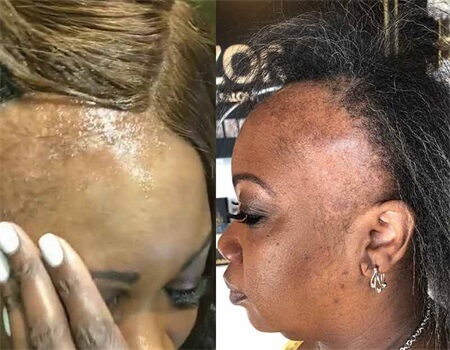
In fact, wigs can not give you dandruff. But wigs may cause dandruff if they don’t fit well on your head, are poor quality, or don’t take care of your natural hair and scalp underneath the wig cap. After all, if you don’t follow good hair care procedures, these actions will make your scalp too dry or too greasy, thus leading to dandruff. Before we explore what causes dandruff when wearing a wig, let us first learn what dandruff is.
What Is Dandruff?
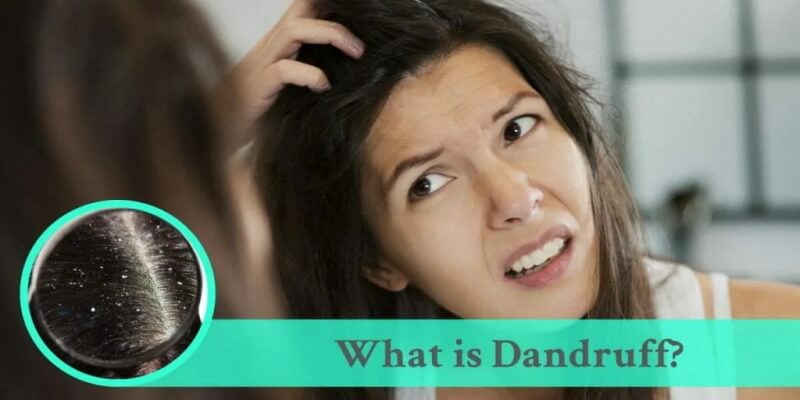
In fact, dandruff is a common scalp condition that causes the scalp on the skin to flake and leave white specks in the hair. Although it isn’t contagious or serious, it can be embarrassing and difficult to treat. Besides, you also need to keep in mind that dandruff and related skin conditions can happen regardless of whether you wear a wig.
If you are not sure if you have dandruff in the hair, please thoroughly check your hair for these tell-tale symptoms:
⚡ There is visible dandruff near the roots of your natural hair or on the scalp.
⚡ You have a red, scaly scalp.
⚡ You have oily hair.
What Causes Dandruff When Wearing Wigs?
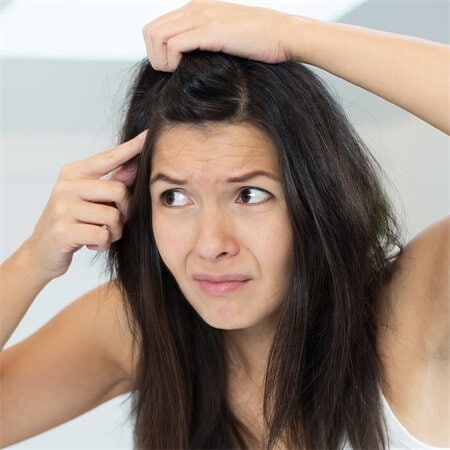
❗ Lack of Hydration Between Washes
Wearing a wig can naturally dehydrate your scalp and hair. Failing to moisturize both the scalp and the hair beneath the wig between washes allows dead skin cells to accumulate and flake off, leading to itching and visible dandruff. Consistent hydration is crucial to maintaining a healthy scalp environment.
❗ Sensitivity or Allergy to Hair Products
Your scalp, like other areas of your skin, is prone to irritation and allergic reactions. Certain shampoos or haircare products may trigger contact dermatitis—an inflammatory response characterized by redness, soreness, or itching. This condition can exacerbate flaking and mimic dandruff. If you notice discomfort after using specific products, consider switching to hypoallergenic alternatives.
❗ Infrequent Cleansing of Natural Hair and Scalp
A common misconception is that frequent shampooing worsens dandruff. In reality, inadequate cleansing allows dirt, sweat, and product buildup to accumulate beneath the wig, creating an oily, congested scalp. This environment promotes microbial growth and disrupts skin cell turnover, ultimately worsening flakiness. Regular, gentle cleansing is essential to prevent this cycle.
❗ Poor-Quality or Ill-Fitting Wigs
Low-quality wigs (e.g., synthetic fibers or non-breathable materials) or overly tight wig caps can restrict airflow to the scalp. Reduced oxygen supply weakens hair follicles, dries out the scalp, and may cause inflammation. Over time, this friction and irritation accelerate skin cell shedding, resulting in persistent flaking and discomfort.
How to Get Rid of Dandruff?
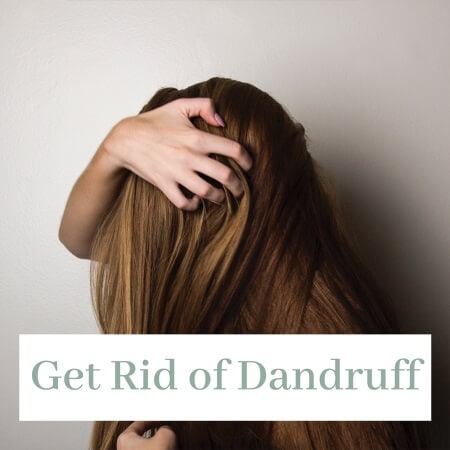
In order to help you deal with an itchy scalp, there are some tips that can help you treat and prevent dandruff when wearing a wig in the following.
1. Give Your Scalp a Rest at Night
If your scalp is looking particularly irritated or flaky, try to schedule a few wig-less days to help your skin recover. After all, your scalp needs a chance to breathe. In addition, many dermatologists also recommend not to wear wigs for a long time on your hair. That is because something covering your head is not good for your scalp. Therefore, you must make sure to always take off your wig at night to allow your scalp to breathe and rest, regardless of whether your scalp is itchy, especially during the dryness of the winter season.
2. Purchase a High-quality Wig
As the saying goes, you get what you pay for! If you’re planning on using a wig for the long term, it would be better to invest in a well-made, well-reviewed wig. High-quality wigs often are lightweight, easy to care for, and comfortable. You can get a stylish and natural look without any hassle with a well-done human hair wig. However, even with a well-made wig, you also need to properly maintain your natural hair and scalp under the wig cap.
3. Opt for a Right-sized Wig
Your wig should not give you a headache, pull at your skin, or pop off. On the contrary, it should be comfortable yet secure. Make sure you measure your head for a wig so that it fits your head correctly. A proper-sized wig does not constrict blood and oxygen flow to your scalp.
4. Wear a Wig Cap
In order to allow your scalp to get the air it needs while you wear a full lace wig, please ensure that you wear a wig cap and that it is made from breathable material. For instance, we sincerely recommend you wear a 100% cotton wig cap or a mesh wig cap to stop your scalp from getting too much sweat or drying out too much.
5. Avoid Coloring Wigs as Much as Possible
Although human hair wigs certainly can be colored, dyed, and bleached according to your need, a few of our clients expressed they sometimes felt their scalp a little itchy when they wore wigs after coloring or bleaching. So nothing is better than coloring wigs.
Or you can choose a colored wig to get your dream look. If you want to color your natural hair and still wear the wigs, make sure to massage your scalp with warmed coconut oil after the color treatment, which will help soothe your skin and your irritated scalp.
6. Wash and Condition Your Hair Regularly
To avoid the build-up of grease and your scalp being too dry, why not consider washing and conditioning your natural hair under the wig cap? Of course, when washing your hair, don't forget to massage the scalp gently, which can stimulate blood flow to the hair follicles. More importantly, before wearing a wig, you must make sure your natural hair is completely dry. Extra moisture under the wig cap will lead to an overproduction of yeast.
7. Use Natural Oils
If you have a sensitive scalp, you can consider using the following products to stop dandruff.
First of all, tea tree oil is a great option as it has powerful anti-microbial and anti-inflammatory properties, which can effectively treat dandruff caused by excess oil or yeast overproduction. You can dilute this tea tree oil in water and spray it on your scalp before washing your hair. Then use a wide-toothed comb to brush your natural hair to make the oils evenly distribute through your hair and help remove the excess skin cells.
And coconut oil is another good option as it hydrates the scalp and prevents dryness.
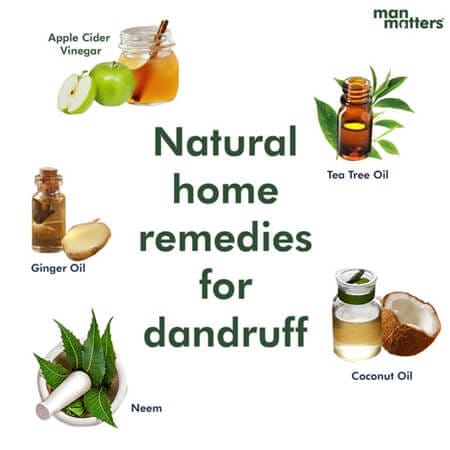
Aloe vera gel also helps to soothe the scalp and treat dandruff because of its antibacterial and antifungal properties.
Last, don't forget the apple cider vinegar. The acidity in the apple cider vinegar is beneficial for helping dead skin cells to shed. Except for this, it can balance the pH levels of your scalp which can help with an overproduction of yeast on the scalp. Just like tea tree oil, you can dilute this in water and spray it on your scalp before washing your hair, too.
8. See a Trichologist or a Dermatologist
If dandruff doesn’t resolve or worsens, it is best to see a trichologist or a dermatologist for a clear diagnosis of the condition. You can get a blood test to check your blood for abnormalities, which can help you figure out what’s causing dandruff in the first place.
Do you have any better suggestions? If you have, please share in the below or contact us.
